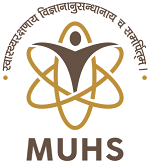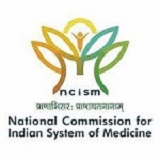Dravyaguna
INTRODUCTION
Dravyaguna is one of the fundamental branches of Ayurveda that focuses on the detailed study of medicinal plants, their pharmacological properties, actions, and therapeutic applications. The term “Dravyaguna” is derived from two Sanskrit words: Dravya (substance or medicinal drug) and Guna (properties or qualities). This subject plays a crucial role in Ayurvedic medicine by providing a comprehensive understanding of how various natural substances interact with the human body.
Dravyaguna encompasses not only herbal medicines but also minerals and animal-derived substances used in Ayurvedic formulations. The study involves the identification, classification, and proper usage of medicinal plants based on Ayurvedic principles. It aims to bridge the gap between traditional wisdom and modern scientific research, making Ayurveda more effective and evidence-based.
This subject is essential for every Ayurvedic practitioner as it enables them to prescribe appropriate herbal medications based on individual patient needs, disease conditions, and the principles of Ayurvedic pharmacology.
AIM
- To provide a deep understanding of medicinal plants and their therapeutic uses.
- To establish a scientific approach to Ayurvedic pharmacology.
- To enhance clinical applications of Ayurvedic drugs.
- To promote conservation, sustainable cultivation, and proper utilization of medicinal plants.
- To integrate traditional knowledge with modern research for global acceptance of Ayurveda.
OBJECTIVES
- Identification and Classification of Medicinal Plants
- Recognizing medicinal plants based on morphology, habitat, and botanical characteristics.
- Differentiating plants based on Ayurvedic and modern taxonomical classification.
- Understanding the seasonal variations and their impact on drug efficacy.
- Understanding Pharmacological Aspects
- Study of Rasa (taste), Guna (qualities), Virya (potency), Vipaka (post-digestive effect), and Prabhava (specific action) of medicinal plants.
- Analysis of how these factors influence the therapeutic effects of herbs.
- Determining the mode of action of drugs in the body according to Ayurvedic principles.
- Therapeutic Applications
- Learning about different plant-based formulations and their indications.
- Studying Anupana (vehicles or media for drug administration) to enhance efficacy.
- Understanding Yogavahi (synergistic effect of herbs when combined with other drugs).
- Exploring drug interactions, adverse effects, and contraindications.
- Cultivation, Collection, and Preservation
- Studying sustainable cultivation techniques to preserve medicinal plant species.
- Learning about the best time and method for collecting medicinal plants for maximum potency.
- Proper storage and preservation techniques to maintain medicinal value.
- Pharmaceutical Processing and Formulations
- Understanding different Bhaishajya Kalpana (Ayurvedic dosage forms) such as Kwatha (decoctions), Churna (powders), Asava-Arishta (fermented preparations), Ghrita (medicated ghee), and Avaleha (herbal jams).
- Learning methods of preparing herbal formulations according to classical Ayurvedic texts.
- Ensuring standardization and quality control of Ayurvedic drugs.
- Research and Development
- Encouraging research in the field of Ayurvedic pharmacology.
- Promoting scientific validation and experimental studies of Ayurvedic drugs.
- Integrating Ayurveda with modern phytochemistry and pharmacognosy.
- Conservation and Global Promotion
- Spreading awareness about the importance of medicinal plants and their conservation.
- Promoting Ayurveda as a sustainable and holistic healthcare system globally.


